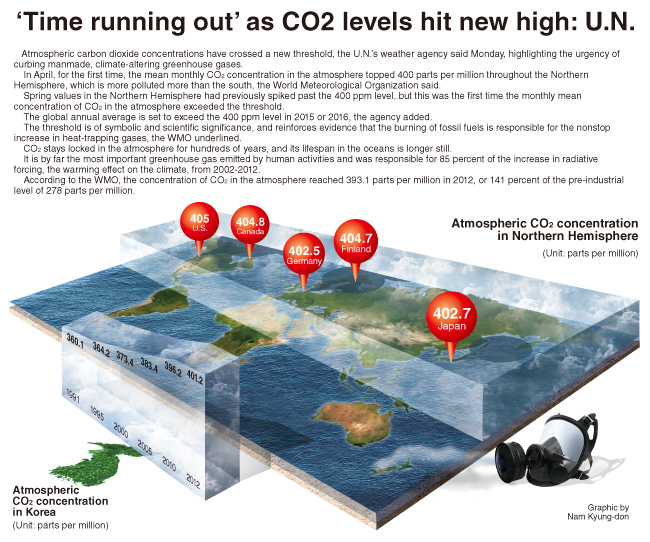
Atmospheric carbon dioxide concentrations have crossed a new threshold, the U.N.’s weather agency said Monday, highlighting the urgency of curbing manmade, climate-altering greenhouse gases.
In April, for the first time, the mean monthly CO2 concentration in the atmosphere topped 400 parts per million throughout the Northern Hemisphere, which is more polluted more than the south, the World Meteorological Organization said.
Spring values in the Northern Hemisphere had previously spiked past the 400 ppm level, but this was the first time the monthly mean concentration of CO2 in the atmosphere exceeded the threshold.
The global annual average is set to exceed the 400 ppm level in 2015 or 2016, the agency added.
The threshold is of symbolic and scientific significance, and reinforces evidence that the burning of fossil fuels is responsible for the nonstop increase in heat-trapping gases, the WMO underlined.
CO2 stays locked in the atmosphere for hundreds of years, and its lifespan in the oceans is longer still.
It is by far the most important greenhouse gas emitted by human activities and was responsible for 85 percent of the increase in radiative forcing, the warming effect on the climate, from 2002-2012.
According to the WMO, the concentration of CO2 in the atmosphere reached 393.1 parts per million in 2012, or 141 percent of the pre-industrial level of 278 parts per million.








